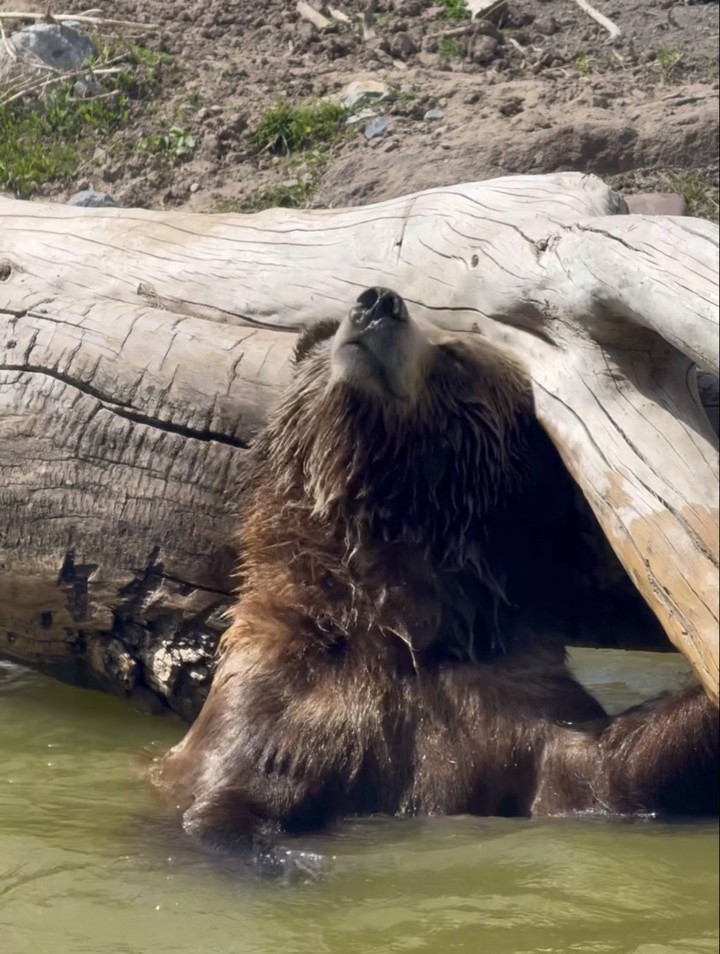- The anticipation of a warm, sunny week in April among Utahns and its effect on local wildlife behavior.
- Understanding the needs and management techniques for animals in Utah’s zoos during this period.
- The significance of educating the public about local biodiversity and conservation efforts during warmer weather.
- Strategies for Utahns to responsibly enjoy and protect natural habitats in warmer weather.
- The role of local organizations in conserving Utah’s unique ecosystems amid changing seasons.
In the heart of the Mountain West, Utah stands as a state rich in biodiversity and scenic landscapes. Each April, as the harsh winter begins to recede, anticipation builds for the warm, sunny week that offers a glimpse into the forthcoming spring and summer months. This change in weather is appreciated not just by Utahns but also by the wildlife and broader ecosystems across the state. During these sunny spells, Utahns display a notable enthusiasm for outdoor activities, simultaneously influencing local wildlife behavior and conservation initiatives. The appreciation and understanding of these dynamics are crucial for fostering an environmental consciousness suited to this unique period.
The anticipation of a warm, sunny week in April among Utahns and its effect on local wildlife is an observable phenomenon. After months of cold, the allure of warm rays and gentle breezes invites more people outdoors. This shift leads to increased foot traffic in parks and natural reserves, where Utah’s diverse wildlife thrives. Animals, from the iconic mule deer to the vibrant Western Tanagers, respond to the influx of human activity. Birds may alter their flight paths, while mammals might retreat deeper into quieter parts of their habitats. Scientists and conservationists note these behavioral shifts as opportunities to study human-wildlife interactions that might affect future conservation models for preserving Utah’s unique ecology.
Within Utah, zoos play a critical role in educating the public about wildlife, providing essential insights into local and exotic species. During the warm, sunny week in April, zoo management techniques focus on adapting to the change in weather and visitor influx. Animal care specialists maintain a delicate balance between accommodating the crowds and attending to the seasonal needs of the animals. Higher temperatures might necessitate changes in feeding schedules or enrichment activities. Shade structures and water features become more prominent to prevent overheating. The increase in visitor numbers also presents a prime opportunity to enhance educational efforts, using exhibit signage and staff presentations to highlight conservation messages pertinent to Utah’s native wildlife and their habitats.
Education serves as a powerful tool in fostering an appreciation for biodiversity and promoting conservation efforts. The warm week in April becomes a focal point for public education campaigns. Schools and community groups organize field trips to local parks, zoos, and botanical gardens. Events scheduled during this period emphasize the importance of protecting natural ecosystems and understanding the role each species plays within them. Educational initiatives are tailored to promote awareness about pressing issues such as climate change, habitat destruction, and sustainable practices. By engaging the public in conservation discussions, these efforts inspire Utahns to protect their environment actively and responsibly, well beyond the sunlit days of April.
With the spring awakening of outdoor enthusiasts comes a responsibility to protect the integrity of natural habitats that make Utah distinct. Responsible outdoor practices are emphasized by various conservation organizations across the state. When Utahns venture into nature, they are encouraged to practice Leave No Trace principles—disposing of waste properly, respecting wildlife, and staying on marked trails to minimize damage to sensitive ecosystems. Additionally, participatory conservation efforts, such as citizen science projects and cleanup events, offer opportunities for individuals to contribute positively to the environment. These strategies ensure that the enjoyment of the warm, sunny week is paralleled by efforts to conserve the landscapes and species that define Utah.
Local organizations, such as the Utah Division of Wildlife Resources and the Nature Conservancy, play pivotal roles in conserving the state’s ecosystems, particularly during seasonal changes. The warm, sunny week provides an occasion to showcase ongoing conservation projects that aim to preserve habitats and support sustainable wildlife populations. These organizations rely on community support, advocating for policy changes and sustainable practices that mitigate the impact of human activity on the environment. Awareness campaigns highlight the conservation work being done, inspiring Utahns to participate in preserving their state’s natural heritage.
By understanding and respecting the interconnectedness of human activity and natural systems, Utahns can harness the excitement of a warm, sunny week in April to advance conservation efforts and foster a deeper appreciation for their unique ecosystems. This period not only marks a transition in the year but also serves as a reminder to engage actively in efforts to protect the remarkable landscapes and wildlife that define Utah.
*****
Source Description
Utahns when we get one (1) warm, sunny week in April 🤩


